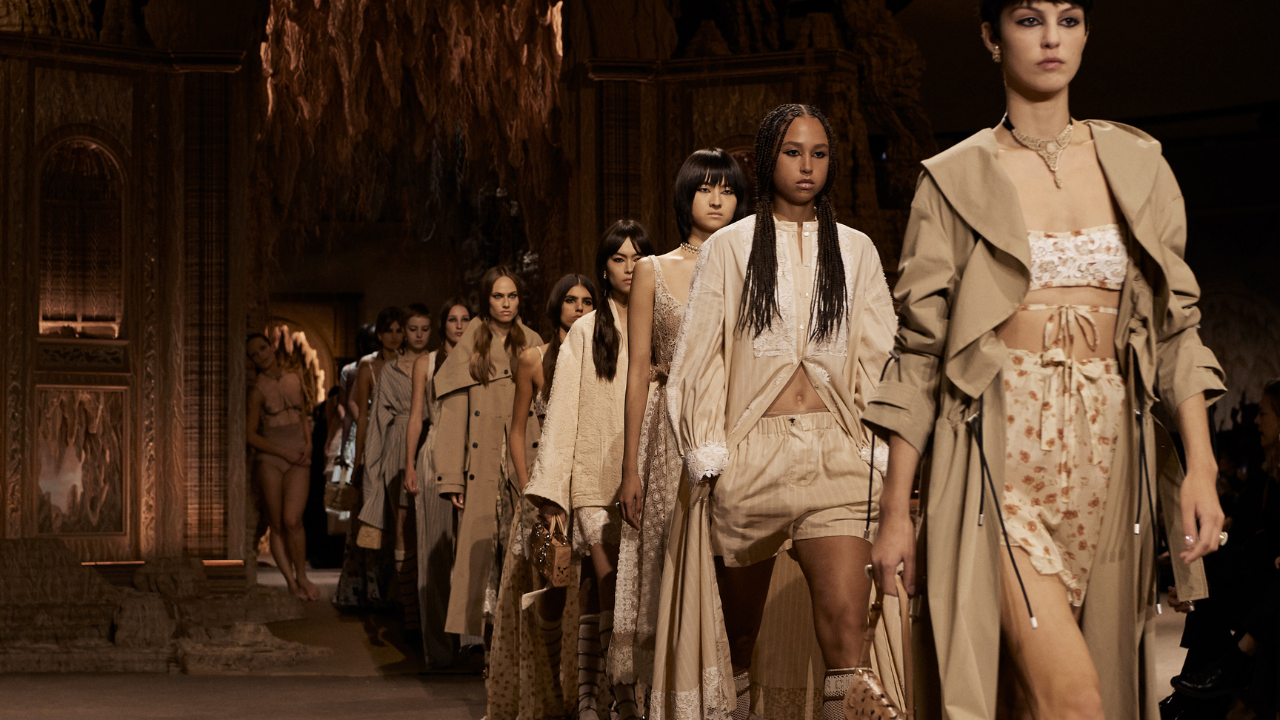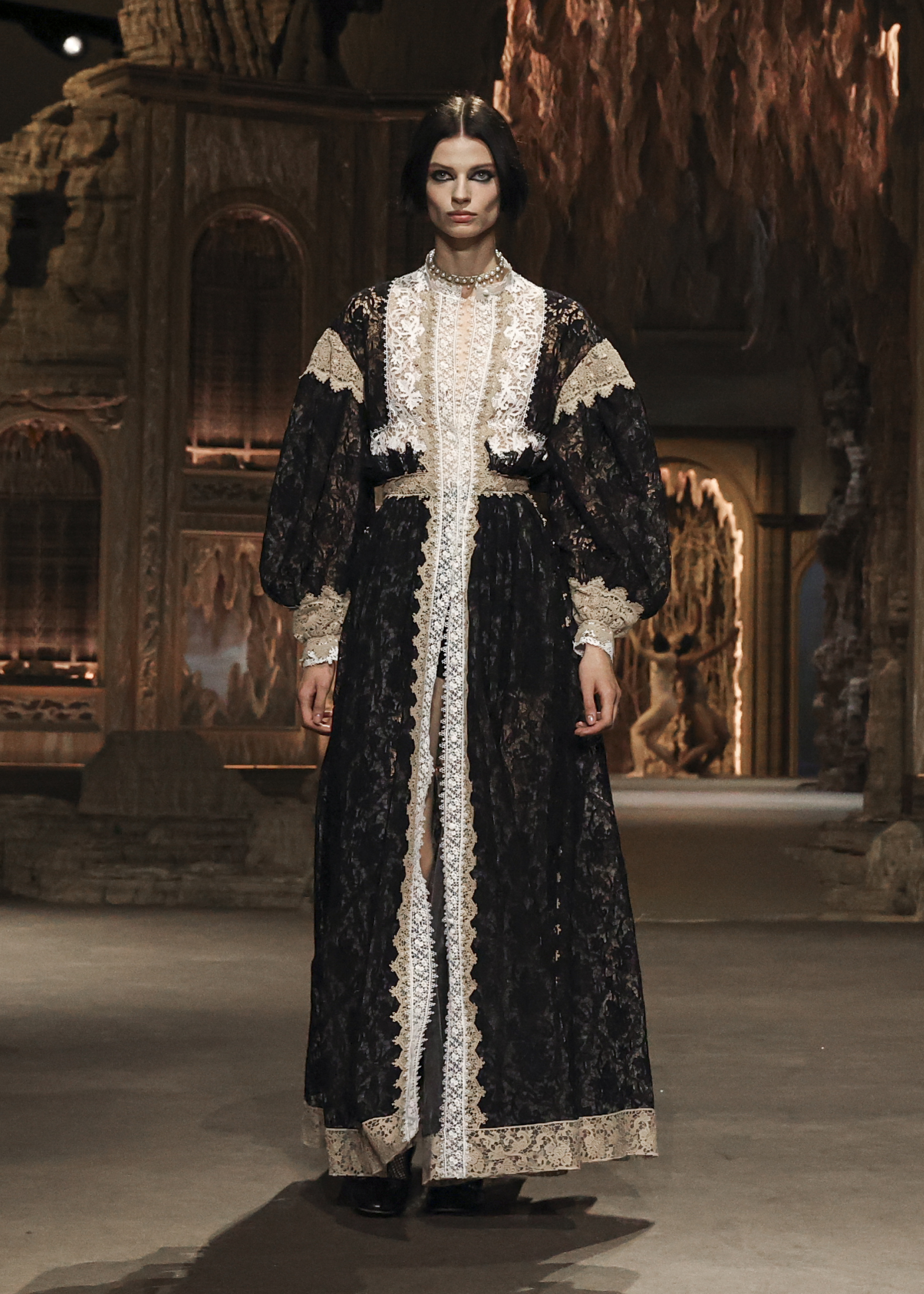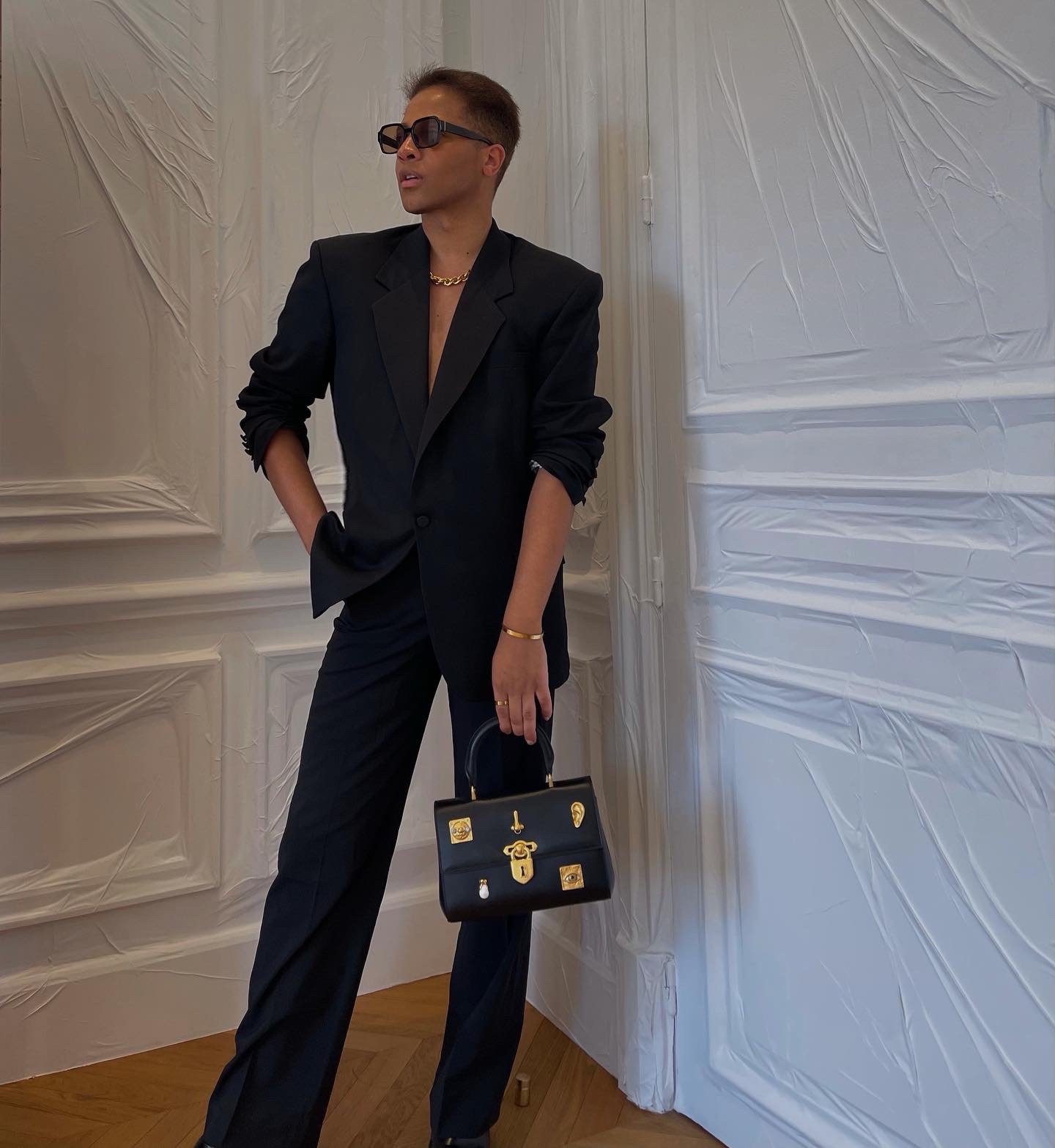

When Dior’s creative director of women’s haute couture, ready-to-wear, and accessories Maria Grazia Chiuri, presents a collection for the coveted French maison, the designer always goes above and beyond. Not only does she showcase her latest inventive designs, but each presentation takes it to another level through creative storytelling with intricate sets and artistic collaborations.
For Dior’s Spring-Summer 2023 show located at the Tuileries garden, Grazia Chiuri once again put her craftsmanship to the test. She continued to champion women and feminism through her designs and paid tribute to French and Italian noblewoman Catherine de Medici this season. She also infused her love for Paris with a standout print of a map of the capital from the house’s archives.

After the show, GRAZIA USA went backstage to talk with the designer (who was recently awarded the Couture Council Award for Artistry of Fashion by the Couture Council of The Museum at FIT) to learn more about her vision and what keeps her inspired.
GRAZIA USA: From the garments, to the scenography and the dancers, the presentation was much more that a traditional runway show. How would you describe it in your own words?
MARIA GRAZIA CHIURI: As a collective collaboration born of the meeting of different projects and languages, they have imagined a performance reminiscent of the Renaissance, reinterpreting it in the sense, precisely, of a veritable rebirth.
G: Why did you choose Catherine de Medici as your inspiration for the show?
MGC: I first found out about her immediately when I arrived in Paris. Her history was super interesting pioneering political intelligence and the innovations of women. I wanted to celebrate everything in common between France and Italy. She was one of the first to understand the power of women and defined her roots by dressing herself in black, heeled shoes, the corset, and Burano lace, which were all brought into the royal manufacturers. It was a moment where I liked to reflect on how much fashion was seen with the idea of power in the past. So for me, it was strange because I think fashion is more about freedom and less about power, but this history is fascinating.
G: A big focus this season was the waist; tell us how the silhouettes came to be.
MGC: Yes, the waist was such an important focus this season. Catherine de Medici often wore corsets, so the corset that I did was a versatile accessory that is not so much a distracting bustier but an object that is now an accessory and can be worn with several different looks.
G: Let’s talk about the extraordinary setting. You partnered with artist Eva Jospin to create the fantastic display. Each season you’ve showcased female artists, is this important for you to continue in your work?
MGC: Oh, I was lucky to collaborate with Eva this season and for couture. She knows Italian culture very well, and my dream was to allow her to present her work on a larger scale for this important project. We spend more than one year putting the idea together. It was challenging to create the baroque grotto and all the artwork with only recycled paper, but it was essential to us. It’s magnificent to have here inside this garden, and I love collaborating with artists, especially females, to give them a space where they can create with an artistic vision. I think it’s really something that they appreciate that I can do.
G: How do you balance protecting the heritage of Dior, while at the same time, transforming it into the needs of contemporary women?
MGC: I really love to maintain the heritage of the brand because I think it’s an important part of the history. At the same time, I think it’s very important to be in conversation with contemporary women. I am a woman, I have a lot of friends, I have a daughter. I think it’s a dialogue with the other women that are around the world.
G: You manage so many things all at the same time. How do you balance it all?
MGC: Bad. [Laughs] Like my son said, I try to do my best. And I do it with a lot of passion, but it’s normal that I can’t do everything so well and more people should understand that.
G: What is one of your challenges as a fashion designer on a daily basis?
MGC: Oh, I think it’s very complex to be a fashion designer. I never imagined when I started in school that it could be possible to arrive to be a creative director in New York. But it is important that you do everything with passion.














